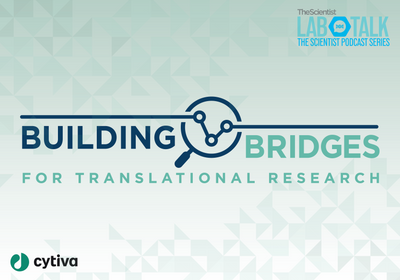
As the age of the general population increases, so does the need for precision treatments for age-related cardiac health decline. Heart failure is a rising global cardiovascular epidemic driven by aging and chronic inflammation. However, despite research efforts to establish heart failure drivers and understand the pathophysiology of age-related heart failure, strategies for prevention or treating the root cause remain elusive.1
Cells become senescent when they reach a certain age that signals them to stop growing and dividing. Senescent cells secrete various proteins involved in cellular aging and pathological processes, including the metabolic protein insulin-like growth factor-binding protein-7 (IGFBP7). Using proteomics, researchers identified IGFBP7 as a potential biomarker for heart failure, and in 2017, the American Heart Association recognized this protein as an important biomarker for heart failure prognosis and diagnosis based on clinical data. Its involvement in the underlying pathology of heart failure is of interest to scientists and clinicians alike.2-4
“The big question everybody asks is: Is it a bystander, or is it a contributor?” explained Peter Liu, the chief scientific officer and vice president of research at the University of Ottawa Heart Institute, who was among the first researchers to identify IGFBP7’s role in heart failure diagnostics, and whose research team published new findings answering this question in Nature Cardiovascular Research.4
In the study, Liu’s team discovered that IGFBP7 is overexpressed in the heart and blood of patients with chronic heart failure and in a heart failure mouse model, promoting cardiac cell senescence. They found that downregulating or neutralizing IGFBP7 acts in opposition to the cardiac remodeling that drives heart failure. Delving deeper into the molecular pathways, the researchers found that upregulated IGFBP7 promotes cardiac remodeling and senescence by suppressing the anti-senescence factor FOXO3a, preventing DNA repair and reactive oxygen species detoxification.
This work builds on previous clinical human research, including a large cohort study where scientists linked IGFBP7 pathways to different stages of immune system regulation that affect inflammation, which has implications for both heart failure and senescence in human patients.2 “We did the molecular work finding that if you actually genetically remove [IGFBP7], it can actually improve the heart function, decrease the fibrosis, decrease the hypertrophy, decrease the cell death, decrease the aging signals,” said Liu. “It's actually directly contributing to all these consequences.”
We are cautiously optimistic that this may be a therapeutic target.
- Peter Liu, University of Ottawa Heart Institute
“We are cautiously optimistic that this may be a therapeutic target,” said Liu. Future avenues for studying the role of this protein in heart failure will include examining therapeutic approaches such as blocking IGFBP7 with antibodies or downregulating its expression with RNA-based therapeutics.
“The nice thing is that by blocking this, by silencing [IGFBP7], you can actually see significant benefit in lessening the severity of heart failure,” said Gary Lopaschuk, adjunct professor and AHFMR scientist at the University of Alberta, who was not involved in the study. “It's not just a biomarker, it actually is a targetable intervention.”
Additionally, Liu’s research suggests that selectively targeting IGFBP7-regulated senescence pathways may have therapeutic potential for treating aging-related pathologies beyond heart failure, as IGFBP7 concentrations are predictive of both renal and cardiac events among people with type 2 diabetes and high cardiovascular risk.5
“We know that processes [that] accelerate aging will lead to diabetes, and diabetes can accelerate aging, and we tend to treat them separately,” explained Liu. “In fact, there could be very much synergistic links between the two…If we actually have tools to deal with aging and diabetes, it may actually have crossover benefits and may help to identify more molecules like IGFBP7.”
References
- H. Li et al., “Targeting age-related pathways in heart failure,” Circ Res, 126(4):533-51, 2020.
- V. Bracun et al., “Insulin-like growth factor binding protein 7 (IGFBP7), a link between heart failure and senescence,” ESC Heart Fail, 9(6):4167-76, 2022.
- A. Bayes-Genis et al., “Omics phenotyping in heart failure: the next frontier,” Eur Heart J, 41(36):3477-84, 2020.
- L. Zhang et al., “Insulin-like growth factor-binding protein-7 (IGFBP7) links senescence to heart failure,” Nat Cardiovasc Res, 1:1195-1214, 2022.
- J.L. Januzzi et al., “Insulin-like growth factor binding protein 7 predicts renal and cardiovascular outcomes in the Canagliflozin Cardiovascular Assessment Study,” Diabetes Care, 44(1):210-16, 2021.







